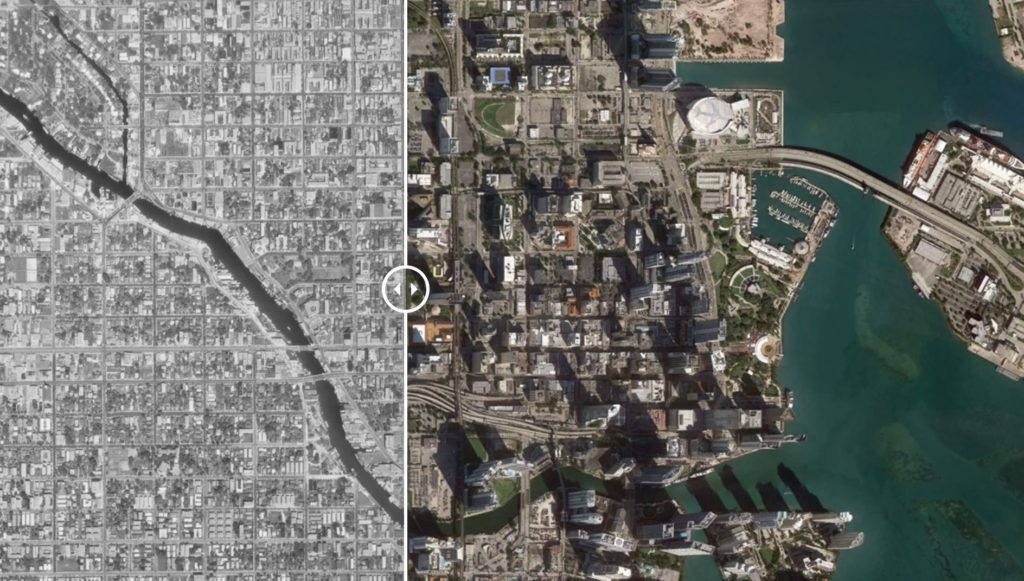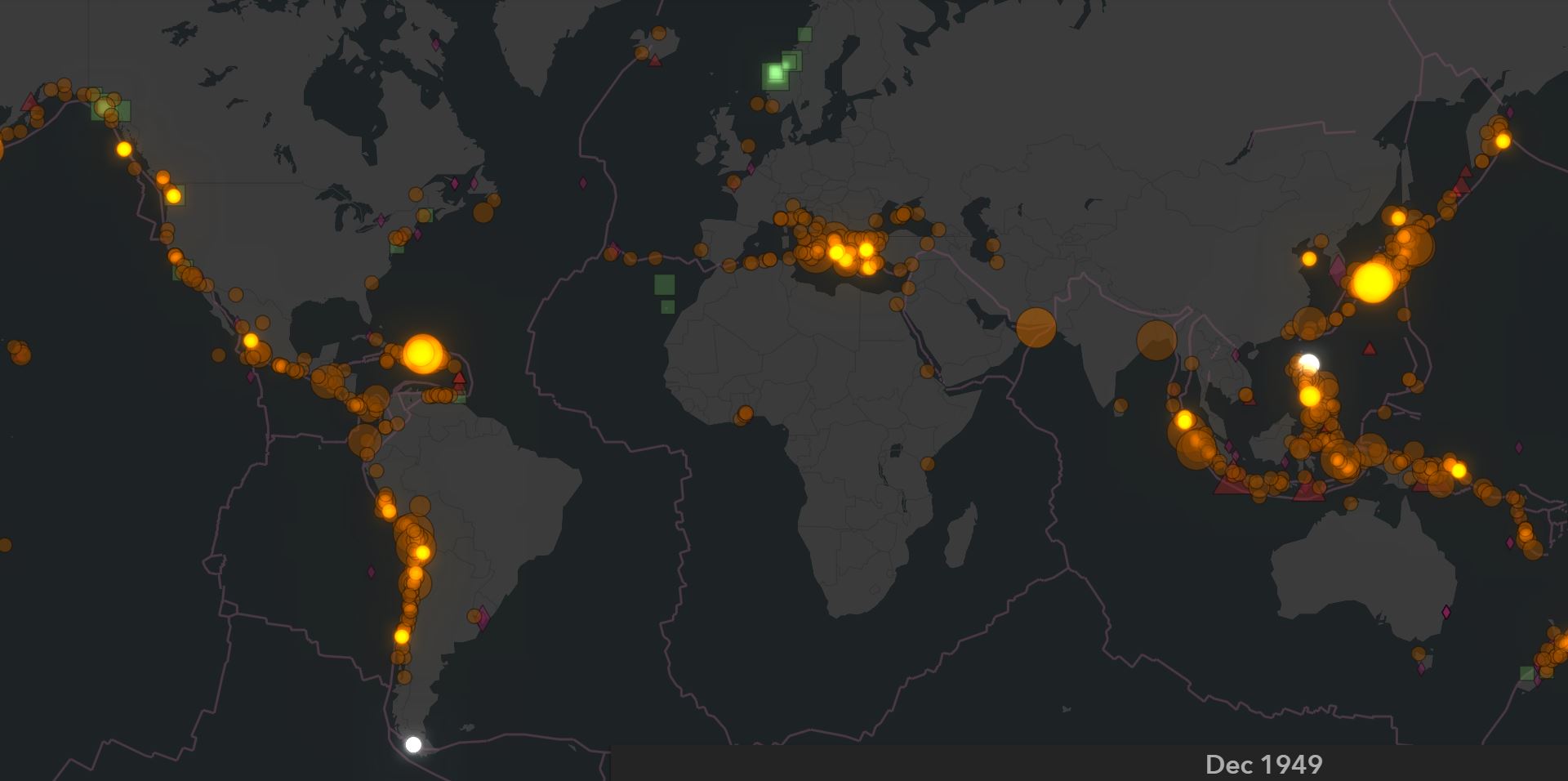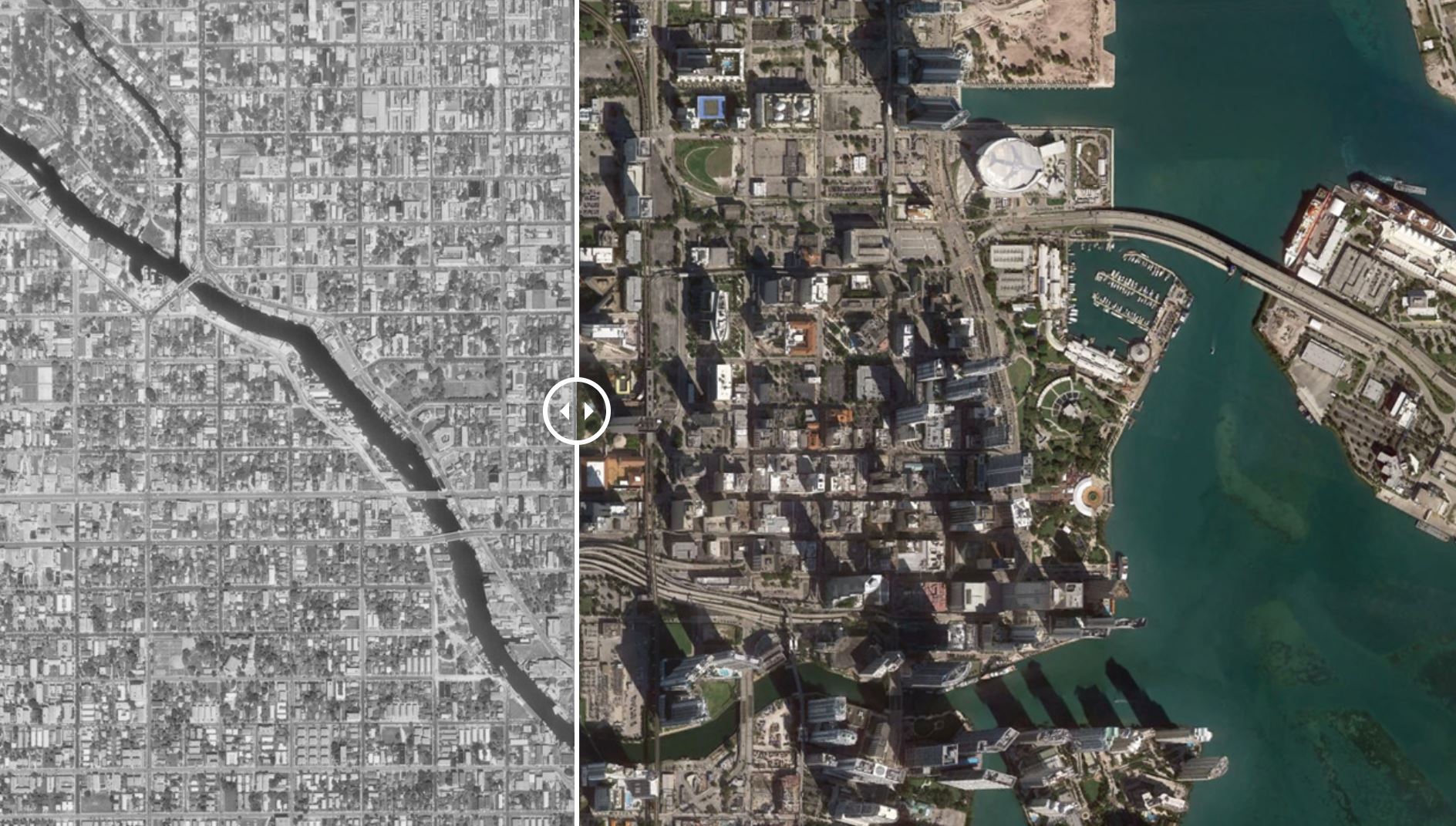As human demands for convenience increase, so too does our appetite for physical space. And space, regardless of how much we think we have, is disappearing at an alarming rate, showing a human appetite that is not only irresponsible, but one that is entirely unsustainable and inherently selfish.
Some of our choices, like development and highway construction, have direct, visible impacts on our earthen surroundings, while other events, such as sea level rise, are more subtle, having long-lasting, damaging effects on land but in a way that’s so gradual, it never changes the social status quo, completely bypassing our ability to effectively comprehend the change.
But what’s worse, however, isn’t our inability to recognize this gradual change as a cohesive unit, or see the direct impacts to our environmental landscape, it’s our inability to see space as a limited collective good. Instead, we choose to embrace space as never-ending, an unfortunate side effect of human ambition and one that will potentially fail us as we move further into the 21st century.
Human Beings are Reactionary and Selfish with Space
Human beings, as a species, are entirely reactive in nature. We choose to deplete resources until there’s almost nothing left and then finally, after recognizing the financial downfall of using it all, choose to replenish it. We’ve seen this with some forests, where we’ve cut down entire regions, only deciding that enough is enough when it’s clear that complete and total destruction is imminent.
In other instances, where the resource can’t be replenished, we innovate. Such is the case of oil, a non-renewable resource that throughout its history has repeatedly received doomsday predictions for when and if it will finally run dry. But just as those prophecies started to pan out, we human beings innovated, using our mechanical prowess to engineer our way into new extraction methods, ones that once seemed impossible.
It’s an extraordinary and amazing accomplishment for our species and a testament to human ingenuity, but like some other human successes, it’s also given us a false sense of reality — one where physical space, in all of its forms, is always there and readily available.
But unlike the 20th century, where some uncharted areas were still unexplored, the 21st century is anything but a vast landscape of rolling hills and islands just waiting to be developed. No, it’s a wasteland of roads, sprawling suburbs, and cookie-cutter homes sitting adjacent to a highway full of fast food. One where developers, property owners, and city leaders all rationalize their decisions with simple, piecemeal thoughts: what’s one more house on the hill hurting, what’s one more beach hotel going to do, what’s one more parking lot have to do with anything?
But now, it’s clear that those small decisions have added up. Today, more so than at any point in human history, we have to ask ourselves, “when does this buck stop?” Are we going to use up space until it’s completely gone? Are we going to engineer our way into a fix? What if we “innovate” at the last minute just like we always do, will that work?
The answer, it seems, is unlikely. In all reality, the buck probably won’t stop and our irresponsible habits will continue.
If our patterns throughout history suggest anything, they indicate that our idea of survival has always depended on our ability to push outward into another physical space. When a war is fought, a victor takes his prize and the loser must adapt or leave. When a “job creator” comes to town, we build more single-family homes to meet demand. When traffic starts to pile up, we add more lanes to our super highway.
Maybe this has actually worked from time to time, but the difference today, however, is that the availability of space has come to a screeching halt, creating a threshold, that if crossed, will have extremely dire consequences.
One more highway will undoubtedly separate more wildlife, bringing extinction to yet another species. One more gated community will pander, yet again, to social segregation and fear of an exaggerated crime. One more bridge will increase our dependency on cars, bringing environmental consequences with it. One more fast-food chain will grow our addiction to meat, requiring even more grazing land.
This, by all accounts, is the definition of us, reactionary human beings with a blind sense of understanding the world around us. A species that can’t collectively see past their own generation and offers temporary solutions because the underlying problem, the real problem, is too difficult to take on. A species that thinks physical space is an endless resource that can be used without consequences.
This mentality, this rationale that someone else in the future will just figure it out when the time is right, is both wrong and misguided. If we are to change, if we are to have a single ounce of hope moving further into an interconnected world, then we must recognize that physical space is the one constant that keeps this world balanced, and to lose that space, is to lose everything.

There’s No Time to Lose, It’s Time to Build Up
Finding proof of human irresponsibility doesn’t require you to take a billion-dollar rocket into orbit. Not at all. All you have to do is look out an airplane window or open Google Maps and simply zoom in. What you’ll find is obvious.
Human beings, in a span of just one century, have carved this world into pieces. We’ve defined and separated it with roads, where each confined space is covered in concrete, cars, development, and agricultural land. We’ve harnessed and controlled the natural flow of rivers, we’ve turned entire regions into farmland, and we’ve leveled almost every inch of our surroundings. We’ve taken every corner of the earth and said, “this land has potential for something, let’s use it.”
Yet, at the same time, it’s also quite impressive because somewhere, somehow, in between all those carved up pieces of “potential something,” is a pretty incredible, functioning, interconnected, global economy.
A McDonald’s on every continent, a Coke bottle on every shelf, 7 billion people having access to the same Amazon products, 24 hours a day, 7 days a week, with a quick, digital click.
But while our habits may give the appearance of harmless necessity, in actuality, somewhere else, some untouched mountain top, some community, some wetland or jungle, is being destroyed for something that we think we need.
Again, in terms of human ingenuity, in terms of engineering and our logistical ability, it really is amazing. But in terms of our long-term outlook, we have to ask ourselves, “is it really worth it?” Because all of it, every resource, every consumer product, every grocery store, and every decision made in this world is dangerously dependent on physical space, and that space is dangerously close to extinction.
But what’s most worrisome, however, is the inconsistency in regulating all of this; it doesn’t appear to have a compass. It’s as if the concept of an interconnected global economy is a free-for-all — a rogue battleship, operating independently of laws and having an invisible leash even in the backdrop of international agreements. It’s as if technological advancements have surpassed governments’ ability or willingness to change anything; the only plan being to build where space allows us to build and to extract where space allows us to extract.
It’s painstakingly frustrating, and it’s most certainly disappointing; it’s also going to get a whole lot worse.
Because this course, unlike its predecessors, doesn’t have a lot of room left. If nothing changes, we’re going to see the inevitable happen at some point. Countries will collapse and democracies will fall. Famine, war, species eradicated, fragile ecosystems completely unraveled — these are going to happen, and every one of these things, all of them, regardless of how different they are in subject area, are all at risk simultaneously.
Their Achilles’ heel? They all have a dependency on physical space.
And It may not be our generation, but the trajectory of data doesn’t lie. If we stay on the present course, and the availability of physical space continues to disappear, the world, as we know it, will start to fall apart.
It all leaves us with one solution.
The one missing piece of the puzzle, our only saving grace, and the one thing that urban planners from around the world have been pointing to over and over and over again, is to simply build up. Embrace space as a collective good, leave untouched land where it is, and build up instead of out.
Building Vertically Is a Good Start
The concept of “building up” is pretty simple and exactly how it sounds. Instead of building horizontally — clearing lots wherever we sit fit for something we deem worthy — we build vertically in the spaces that are already developed, decreasing our human footprint and letting the natural environment do what it does best, stay natural.
This doesn’t mean that we need to build high rises everywhere, but it does mean that we need to change our regulations and single-family zoning habits — allow granny flats, accessory dwelling units, fourplexes, triplexes, doubles. Get rid of policies that cater to a single-family home and reduce our dependency on cars. Let neighborhoods return to what they used to be — strong, independent, walkable, compact, self-contained, multi-housing, neighborhood economies.
We don’t need to abandon sprawled areas or force people into a metropolis, but we do need to rework the space we’ve already developed and put regulated protections on the areas we haven’t.
This, in a nutshell, is the only way to move forward. It’s leading people, and the places they occupy, to denser, more practical neighborhoods that can be harnessed and used for the collective good.
But what about resources? What about cars? How does human compactness reduce the adverse impacts of that TV I bought on Amazon?
Density, as a concept by itself, does not fix everything when it comes to space; however, when accompanied with favorable policy, it stands a chance.
So while it may start with building vertically, it ends with a collection of policy and ideas geared towards sustainability.
Our agricultural footprint can be reduced with urban-based vertical farming systems, our dependency on cars can be eliminated with reliable and effective transportation, our consumption habits can be changed with environmental laws.
All of this, of course, is an extremely daunting task for a world not too keen on cooperation.
But there is a consistent truth to physical space too — it may be limited to our left and right but it’s virtually limitless above our heads. That truth, when taken at face value, should put some motivation up under our feet and spark some hope in our big list of negatives.
So, when it comes down to our choices, we really only have two. We can remain reactionary and selfish human beings and head into the future with the mindset that maybe, just maybe, someone out there will save us, that maybe someone else will take up the mantle and fight our way out of this mess. Or, we can be proactive and take the first step.
Build vertically. Create compactness. Reduce our spatial footprint. Protect unused land. Save the World.

Millennial Cities
Want free articles, news, tools, and information? Subscribe below and we’ll add you to the list!
